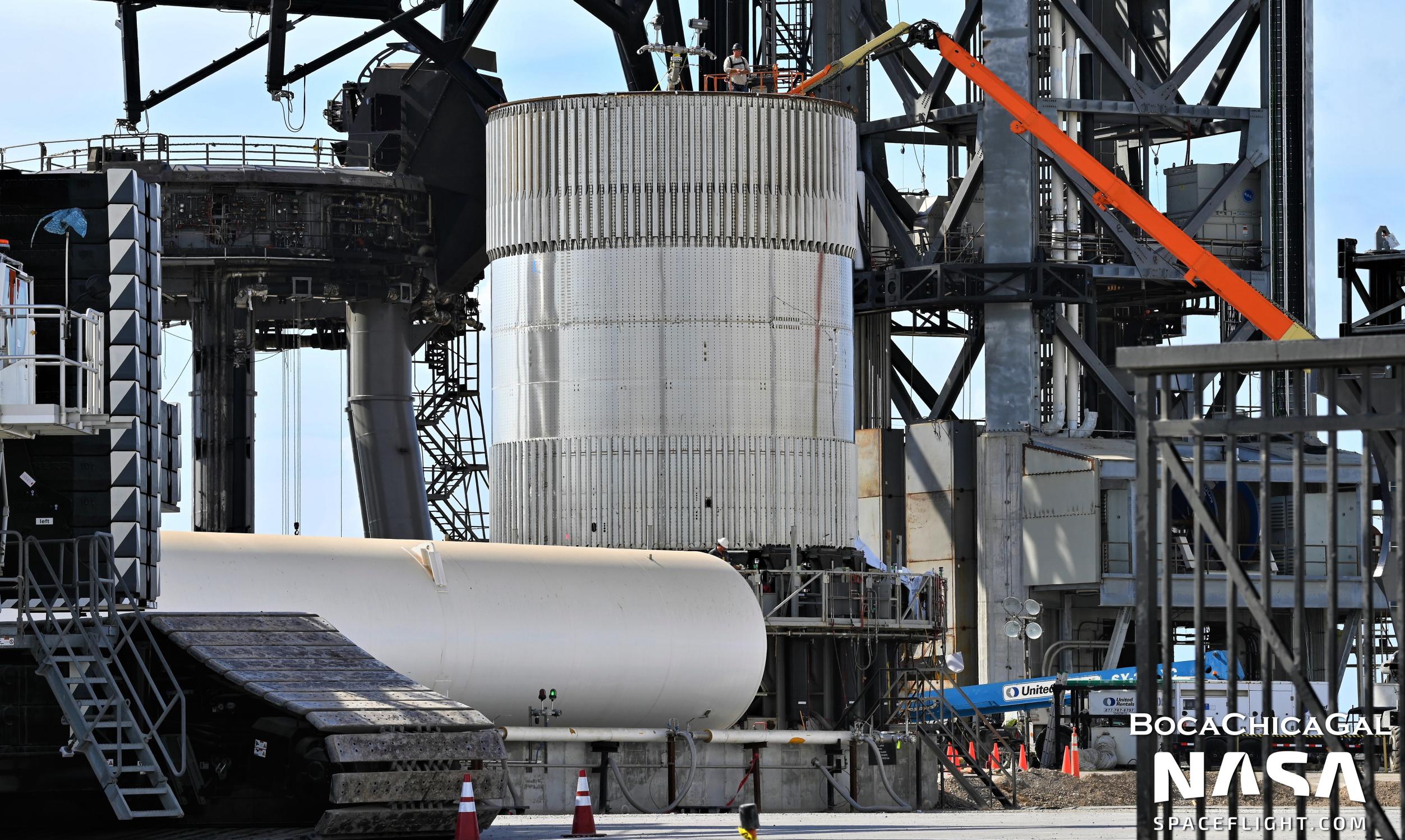
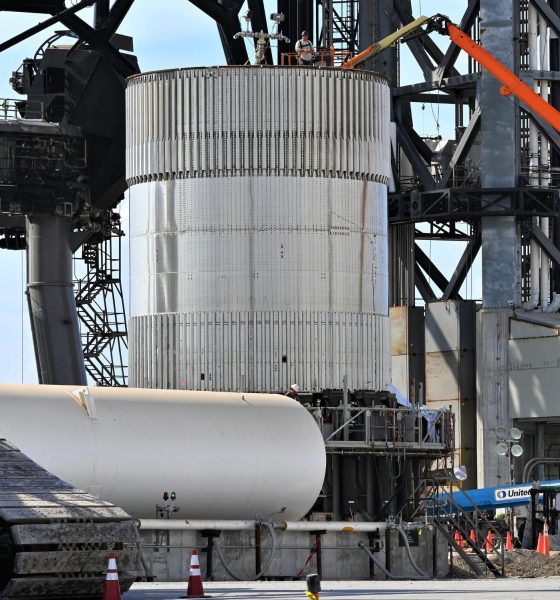
News
SpaceX Super Heavy tank prototype survives crush testing
A tank prototype similar to SpaceX’s next-generation Super Heavy rocket booster has survived a series of tests that repeatedly attempted to destroy it.
Known as Booster 7.1 or B7.1, the tank is the latest in a long line of ‘test tanks’ designed to verify the performance of Starship and Super Heavy and qualify new designs and manufacturing techniques without risking an entire upper stage or booster. In general, that means that test tanks are as minimal as possible and much shorter than either Starship stage, but they’re also assembled out of nine-meter-wide (30 ft) steel barrels and domes almost identical to the sections that make up Starship and Super Heavy.
For most of the duration of SpaceX’s steel Starship program, ‘test tank’ work has followed a fairly consistent and linear development path, where tanks were used to verify design changes before those changes were implemented on more expensive prototypes. B7.1 firmly ignored that norm.
While it’s not an exact match, the tank – built out of two stacked rings and dome sections and measuring about 11 meters (~36 ft) tall – has a Super Heavy thrust structure (where Raptor engines would attach) and external stiffeners known as stringers that are (mostly) exclusive to Starship boosters.
As its name suggests, B7.1 shares many of the significant design changes that SpaceX had already implemented on Super Heavy Booster 7 (B7). The company began testing B7 months before B7.1, subjecting the full-size booster to multiple cryogenic proof tests and Raptor thrust simulation testing to qualify its new thrust ‘puck’ and several other structural changes. SpaceX began testing B7.1 in late June, shortly before Super Heavy Booster 7 was damaged by an unplanned explosion that halted its first Raptor engine test campaign. B7.1 testing then restarted in mid-July and was completed by the end of the month.
For unknown reasons, SpaceX’s decision to build and test Booster 7 before B7.1 meant that any significant issues discovered during subsequent B7.1 testing could disqualify the booster for flight testing, potentially wasting the months of work and tens of millions of dollars already invested in the prototype. Ultimately, though, B7.1 appeared to sail through multiple cryogenic proofs and crush tests without any catastrophic issues. Only on the last crush test did any part of the test tank finally give way, and the resulting damage was minor.
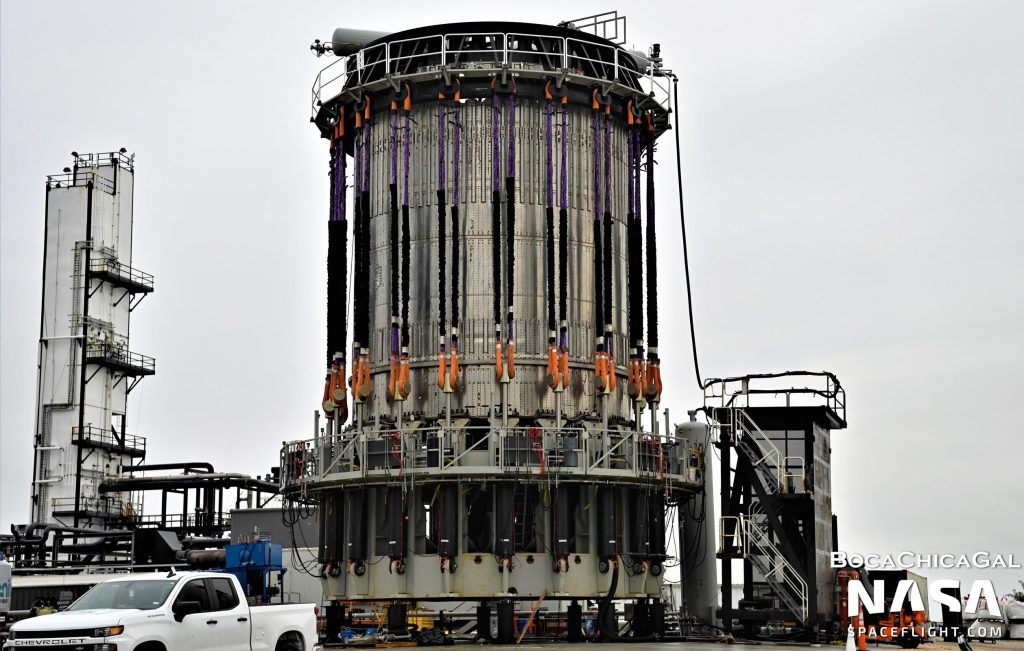
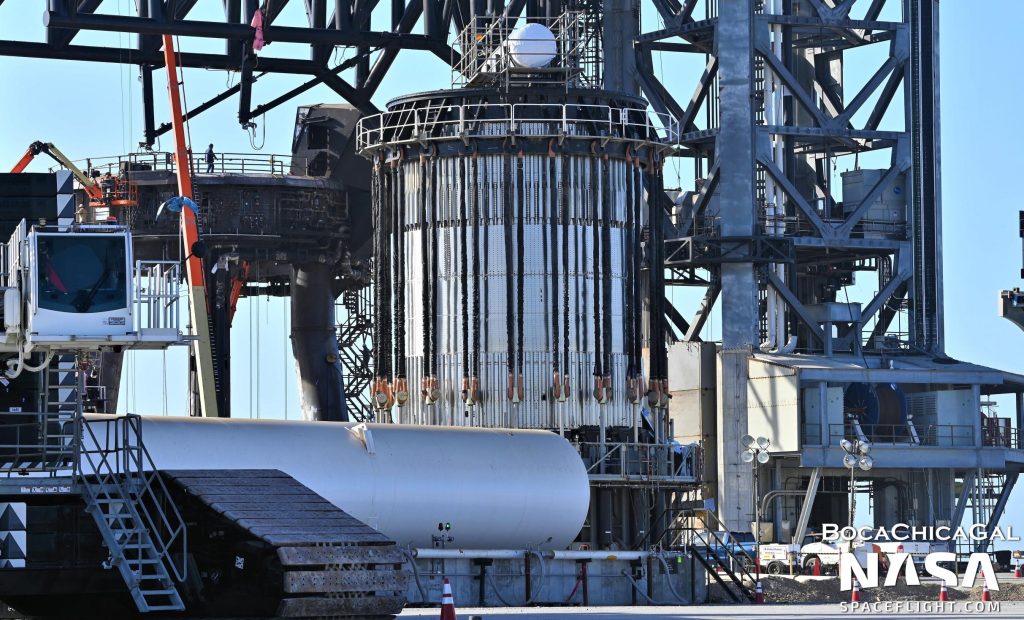
B7.1’s testing made use of a relatively new two-piece stand. The tank was first installed on a sturdy base using clamps similar to those on the Starbase orbital launch site’s (OLS) launch mount. Then, a hat-like structure was placed on top of the tank, resting on the surface that a Starship upper stage would sit on during launch. Massive ropes were finally dropped down to attach to hydraulic cylinders on the base. Once B7.1 was loaded with benign cryogenic liquid nitrogen (LN2), replicating most of the thermal and mechanical stresses of real oxygen/methane propellant, the hydraulic cylinders retracted, pulling the cap down to evenly exert massive crushing forces down the vertical axis of the test tank. Simultaneously, additional rams installed underneath B7.1 may have simulated the thrust of 13 central Raptor engines.
It’s unclear what exactly SpaceX was testing. The goal of the test could have been as simple as verifying that Super Heavy Booster 7 can withstand the weight of a fully-fueled Starship (~1350 tons / ~3M lb) sitting on top of it. It could have also been used to simulate an entire orbital launch from Super Heavy’s perspective, replicating many of the forces Starship boosters will experience between liftoff and landing. Given that Booster 7’s upgraded thrust puck had already made it through stress testing, B7.1 didn’t have much to add there, but it may have been useful for estimating the compressive strength of the current Super Heavy booster design.
Regardless of what B7.1 did or didn’t prove, it did so with very little drama. After four long days of testing, at least two of which involved attempting to crush the tank, the only truly noteworthy visual event was evidence of a slight buckle near the top of the tank during its last crush test. A few days later, with the test stand ‘cap’ removed, B7.1 survived one final test in which SpaceX likely attempted to pressurize the tank until it burst. Instead, the tank didn’t so much as develop a leak, reiterating – contrary to their occasional tin-can-like appearances – just how sturdy Starship and Super Heavy really are.
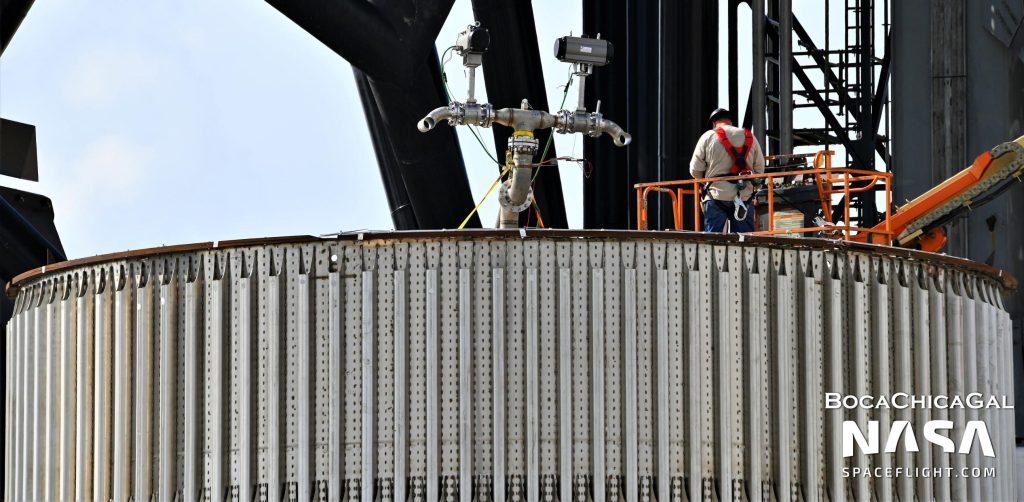
With nothing more to give, SpaceX will likely scrap B7.1. Meanwhile, Super Heavy Booster 7 remains stuck inside one of SpaceX’s Starbase assembly bays after being forced back to the factory by unintentionally explosive testing. The fate of that booster is unclear but SpaceX has removed all or most of its 33 Raptor engines over the last few weeks while simultaneously expediting work on Booster 8, which may ultimately take B7’s place.

News
Tesla is seeing a lot of momentum from young Koreans in their 20s-30s: report
From January to November, young buyers purchased over 21,000 Teslas, putting it far ahead of fellow imported rivals like BMW and Mercedes-Benz.

Tesla has captured the hearts of South Korea’s 20s-30s demographic, emerging as the group’s top-selling imported car brand in 2025. From January to November, young buyers purchased over 21,000 Teslas, putting it far ahead of fellow imported rivals like BMW and Mercedes-Benz.
Industry experts cited by The Economist attributed this “Tesla frenzy” to fandom culture, where buyers prioritize the brand over traditional car attributes, similar to snapping up the latest iPhone.
Model Y dominates among young buyers
Data from the Korea Imported Automobile Association showed that Tesla sold 21,757 vehicles to the 20s-30s demographic through November, compared to BMW’s 13,666 and Mercedes-Benz’s 6,983. The Model Y led the list overwhelmingly, with variants like the standard and Long Range models topping purchases for both young men and women.
Young men bought around 16,000 Teslas, mostly Model Y (over 15,000 units), followed by Model 3. Young women followed a similar pattern, favoring Model Y (3,888 units) and Model 3 (1,083 units). The Cybertruck saw minimal sales in this group.
The Model Y’s appeal lies in its family-friendly SUV design, 400-500 km range, quick acceleration, and spacious cargo, which is ideal for commuting and leisure. The Model 3, on the other hand, serves as an accessible entry point with lower pricing, which is valuable considering the country’s EV subsidies.
The Tesla boom
Experts described Tesla’s popularity as “fandom culture,” where young buyers embrace the brand despite criticisms from skeptics. Professor Lee Ho-geun called Tesla a “typical early adopter brand,” comparing purchases to iPhones.
Professor Kim Pil-soo noted that young people view Tesla more as a gadget than a car, and they are likely drawn by marketing, subsidies, and perceived value. They also tend to overlook news of numerous recalls, which are mostly over-the-air software updates, and controversies tied to the company.
Tesla’s position as Korea’s top import for 2025 seems secured. As noted by the publication, Tesla’s December sales figures have not been reported yet, but market analysts have suggested that Tesla has all but secured the top spot among the country’s imported cars this year.
News
Tesla FSD fleet is nearing 7 billion total miles, including 2.5 billion city miles
As can be seen on Tesla’s official FSD webpage, vehicles equipped with the system have now navigated over 6.99 billion miles.

Tesla’s Full Self-Driving (Supervised) fleet is closing in on almost 7 billion total miles driven, as per data posted by the company on its official FSD webpage.
These figures hint at the massive scale of data fueling Tesla’s rapid FSD improvements, which have been quite notable as of late.
FSD mileage milestones
As can be seen on Tesla’s official FSD webpage, vehicles equipped with the system have now navigated over 6.99 billion miles. Tesla owner and avid FSD tester Whole Mars Catalog also shared a screenshot indicating that from the nearly 7 billion miles traveled by the FSD fleet, more than 2.5 billion miles were driven inside cities.
City miles are particularly valuable for complex urban scenarios like unprotected turns, pedestrian interactions, and traffic lights. This is also the difference-maker for FSD, as only complex solutions, such as Waymo’s self-driving taxis, operate similarly on inner-city streets. And even then, incidents such as the San Francisco blackouts have proven challenging for sensor-rich vehicles like Waymos.
Tesla’s data edge
Tesla has a number of advantages in the autonomous vehicle sector, one of which is the size of its fleet and the number of vehicles training FSD on real-world roads. Tesla’s nearly 7 billion FSD miles then allow the company to roll out updates that make its vehicles behave like they are being driven by experienced drivers, even if they are operating on their own.
So notable are Tesla’s improvements to FSD that NVIDIA Director of Robotics Jim Fan, after experiencing FSD v14, noted that the system is the first AI that passes what he described as a “Physical Turing Test.”
“Despite knowing exactly how robot learning works, I still find it magical watching the steering wheel turn by itself. First it feels surreal, next it becomes routine. Then, like the smartphone, taking it away actively hurts. This is how humanity gets rewired and glued to god-like technologies,” Fan wrote in a post on X.
News
Tesla starts showing how FSD will change lives in Europe
Local officials tested the system on narrow country roads and were impressed by FSD’s smooth, human-like driving, with some calling the service a game-changer for everyday life in areas that are far from urban centers.

Tesla has launched Europe’s first public shuttle service using Full Self-Driving (Supervised) in the rural Eifelkreis Bitburg-Prüm region of Germany, demonstrating how the technology can restore independence and mobility for people who struggle with limited transport options.
Local officials tested the system on narrow country roads and were impressed by FSD’s smooth, human-like driving, with some calling the service a game-changer for everyday life in areas that are far from urban centers.
Officials see real impact on rural residents
Arzfeld Mayor Johannes Kuhl and District Administrator Andreas Kruppert personally tested the Tesla shuttle service. This allowed them to see just how well FSD navigated winding lanes and rural roads confidently. Kruppert said, “Autonomous driving sounds like science fiction to many, but we simply see here that it works totally well in rural regions too.” Kuhl, for his part, also noted that FSD “feels like a very experienced driver.”
The pilot complements the area’s “Citizen Bus” program, which provides on-demand rides for elderly residents who can no longer drive themselves. Tesla Europe shared a video of a demonstration of the service, highlighting how FSD gives people their freedom back, even in places where public transport is not as prevalent.
What the Ministry for Economic Affairs and Transport says
Rhineland-Palatinate’s Minister Daniela Schmitt supported the project, praising the collaboration that made this “first of its kind in Europe” possible. As per the ministry, the rural rollout for the service shows FSD’s potential beyond major cities, and it delivers tangible benefits like grocery runs, doctor visits, and social connections for isolated residents.
“Reliable and flexible mobility is especially vital in rural areas. With the launch of a shuttle service using self-driving vehicles (FSD supervised) by Tesla in the Eifelkreis Bitburg-Prüm, an innovative pilot project is now getting underway that complements local community bus services. It is the first project of its kind in Europe.
“The result is a real gain for rural mobility: greater accessibility, more flexibility and tangible benefits for everyday life. A strong signal for innovation, cooperation and future-oriented mobility beyond urban centers,” the ministry wrote in a LinkedIn post.








